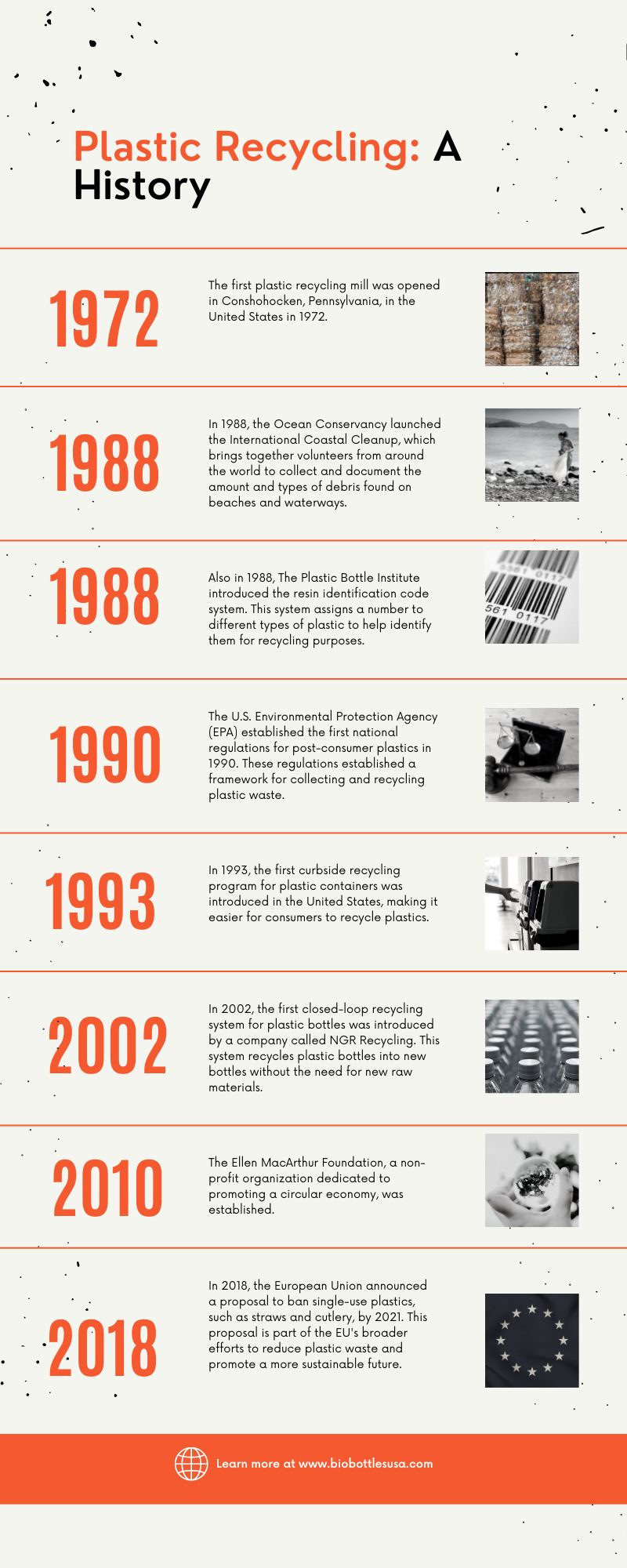Why Plastic Recycling Isn’t Working Well for the Environment
While recycling overall is a good thing, why does so much plastic still end up in the ocean and landfills? Plastic Recycling Isn’t Working well, one reason is ineffective recycling systems. Recycling systems are often inefficient and inconsistent, which means that a significant amount of plastic still ends up in landfills or the environment. In some cases, recycling programs are underfunded or understaffed, which can lead to contaminated recycling waste streams or materials being sent to landfills instead of being properly recycled.
A complex plastic waste stream is also partly to blame. The plastic waste stream is complex and difficult to manage, with many different types of plastics that require different recycling processes. This can make it difficult for consumers to understand what can and cannot be recycled and make it challenging for recycling facilities to sort and process materials effectively.
Making matters worse is the lack of consumer education. Many consumers are not aware of the importance of recycling or may not know how to recycle their plastic waste properly. This can lead to the contamination of recycling streams.
Major Shortfalls in Recycling Plastics
- Contamination of Recycling Stream: One of the biggest problems with plastic recycling is contamination. Many consumers are not educated on what types of plastics can be recycled, leading to contamination of the recycling stream. This can make it difficult and costly to sort and process the materials properly.
- Lack of Market Demand: Another issue is the lack of demand for recycled plastic. In recent years, China has stopped accepting plastic waste from the USA, leaving many recyclers with few options for selling their recycled plastic. This has caused a glut in the market, driving down prices and making it difficult for recyclers to stay profitable.
- High Cost: Recycling plastic can be expensive, especially when compared to producing new plastic. This can make it difficult for recycling companies to compete with virgin plastic manufacturers.
- Single-Use Plastics: The rise of single-use plastics has also made plastic recycling less effective. Many single-use plastic products, such as straws and utensils, are not recyclable and end up in landfills or the environment.

Advantages of Biodegradable Plastics
Biodegradable plastics are a type of plastic that can be broken down into natural components which do not harm the environment. Here are some reasons why biodegradable plastics are superior to other types of plastics and how they can help save the planet:
Less Dependence on Fossil Fuels: Many biodegradable plastics are made from renewable resources such as cornstarch, reducing our dependence on fossil fuels.
Reduced Environmental Impact: Traditional plastics can take hundreds of years to decompose and often end up in landfills or in the ocean, causing pollution and harming wildlife. Biodegradable plastics, on the other hand, can break down into natural components within months, reducing their environmental impact.
Reduced Waste: Biodegradable plastics can help reduce the amount of waste in landfills and in the environment. This is especially important because traditional plastics are not biodegradable and can take up space for hundreds of years.
Lower Carbon Footprint: Biodegradable plastics have a lower carbon footprint compared to traditional plastics because they use less energy and produce fewer greenhouse gas emissions during production.
Can be Recycled: Biodegradable plastics can be recycled and reused, unlike traditional plastics that are often downcycled or thrown away.
Can be Composted: Some biodegradable plastics can be composted, providing nutrients to the soil and helping to reduce waste.
How Biodegradable Plastics Can Help Your Business
Businesses may want to incorporate biodegradable plastics into their product lines for several reasons:
Meeting Consumer Demand: Consumers are increasingly concerned about the environmental impact of the products they buy and are looking for more sustainable options. By incorporating biodegradable plastics into their product lines, businesses can meet this demand and appeal to environmentally-conscious consumers.
Regulatory Compliance: Some countries and states have implemented regulations and policies that require businesses to use more sustainable materials, such as biodegradable plastics. By incorporating these materials into their product lines, businesses can comply with these regulations and avoid fines or penalties.
Biodegradable plastic that does not break down into microplastics is a superior product because it offers several benefits over traditional plastics and other types of biodegradable plastics:
Reduced Health Risks: Microplastics are small particles that can be ingested by marine life, animals, and humans, leading to health risks. Biodegradable plastics that do not break down into microplastics help to reduce these risks and promote healthier ecosystems.
Improved Sustainability: Biodegradable plastics that do not break down into microplastics help to promote a more sustainable future by reducing waste and pollution and by using renewable resources.
Overall, the use of biodegradable plastics that do not break down into microplastics can help to reduce the negative impact of plastics on the environment, promote healthier ecosystems, and improve sustainability. By choosing products made from biodegradable plastics that do not break down into microplastics, individuals and businesses can help to reduce their environmental footprint and promote a more sustainable future.
Here are some potential impacts on the oceans and landfills if all plastics were biodegradable and clean:
Impact on Oceans:
- Reduction in the amount of plastic waste entering the oceans.
- Reduction in the number of marine animals ingesting plastic waste, which could lead to less harm and death of marine animals.
- Reduction in the amount of microplastics in the oceans, which could improve water quality and reduce harm to marine life.
- Improvement in the health of marine ecosystems, as plastic waste can disrupt ecosystems and lead to declines in populations of marine organisms.
Impact on Landfills:
- Reduction in the amount of plastic waste in landfills, which could extend the life of landfills and reduce the need for additional landfill sites.
- Reduction in greenhouse gas emissions from landfills, as the biodegradable plastics would break down more quickly and produce less methane gas.
- Reduction in the amount of plastic waste in the environment, which could reduce pollution and protect wildlife and ecosystems.
- Promotion of a circular economy, where biodegradable plastics could be reused or recycled more easily, reducing the need for new plastic production.
It’s important to note that the impact of biodegradable plastics on the environment depends on how they are produced, used, and disposed of. Biodegradable plastics may not be a complete solution to plastic pollution, but they could be one tool in the larger effort to reduce plastic waste and protect the environment.
It’s difficult to say whether the plastic recycling industry will ever be completely phased out, as the industry plays an important role in managing the millions of tons of plastic waste generated each year. However, as concerns about plastic waste and pollution continue to grow, there are likely to be changes in the way that plastics are produced, used, and disposed of, which could impact the role and viability of the recycling industry.
What Would A World With Biodegradable Plastics Look Like?
As biodegradable plastics become more widely available and affordable, there may be a shift away from traditional plastics and towards biodegradable options. This could reduce the amount of plastic waste that needs to be recycled and could potentially reduce the need for the recycling industry. This could also help to reduce the amount of plastic waste that ends up in landfills and the environment, and could help to extend the life of the recycling industry.
Shift Towards a Circular Economy: A shift towards a circular economy, where products are designed to be biodegraded, could reduce the overall amount of waste generated. In a circular economy, the focus would be on reducing waste and using resources more efficiently, which could reduce the amount of plastic waste that needs to be recycled, placed in a landfill, or wind up in the oceans.
Increased Regulation and Oversight: As concerns about plastic waste and pollution continue to grow, there may be increased regulation and oversight of the plastic industry. This could include mandates for more sustainable packaging, stricter recycling standards, and increased fees or taxes on plastic products. These changes could impact the profitability and viability of the recycling industry.
Why Transition to Biodegradable Plastic
Businesses may choose to transition to biodegradable plastics for a variety of reasons, including:
Environmental concerns: Biodegradable plastics can break down more quickly in the environment, reducing the amount of plastic waste that ends up in landfills, oceans, and other natural habitats.
Meeting consumer demand: Many consumers are becoming increasingly aware of environmental issues and are looking for more sustainable products. Using biodegradable plastics can help businesses meet this demand and maintain a positive reputation.
Compliance with regulations: Some countries are starting to implement regulations that require businesses to reduce their use of non-biodegradable plastics, so transitioning to biodegradable plastics can help businesses stay compliant with these regulations.
Cost savings: While biodegradable plastics may be more expensive to produce initially, businesses can save money in the long run by reducing waste management costs and potentially avoiding fines for non-compliance with environmental regulations.
If governments start to tax non-biodegradable plastics, businesses that continue to use these types of plastics may find themselves at a disadvantage financially. They may face higher taxes, fines, or other penalties for not complying with regulations, which can be expensive. Additionally, consumers may start to avoid businesses that use non-biodegradable plastics, which could result in decreased sales and revenue.
In contrast, businesses that transition to biodegradable plastics now may be able to avoid some of these costs and maintain a positive reputation with consumers. They may also be better positioned to comply with future regulations and avoid potential fines or penalties. While there may be some upfront costs associated with transitioning to biodegradable plastics, the long-term financial benefits could outweigh these costs.
References:
European Bioplastics. (n.d.). Biodegradable plastics facts and figures.
United Nations Environment Programme. (2018). Biodegradable plastics and marine litter.
Ellen MacArthur Foundation. (n.d.). What is a circular economy?
McKinsey & Company. (2020). Plastics waste: A global crisis that can no longer be ignored.

